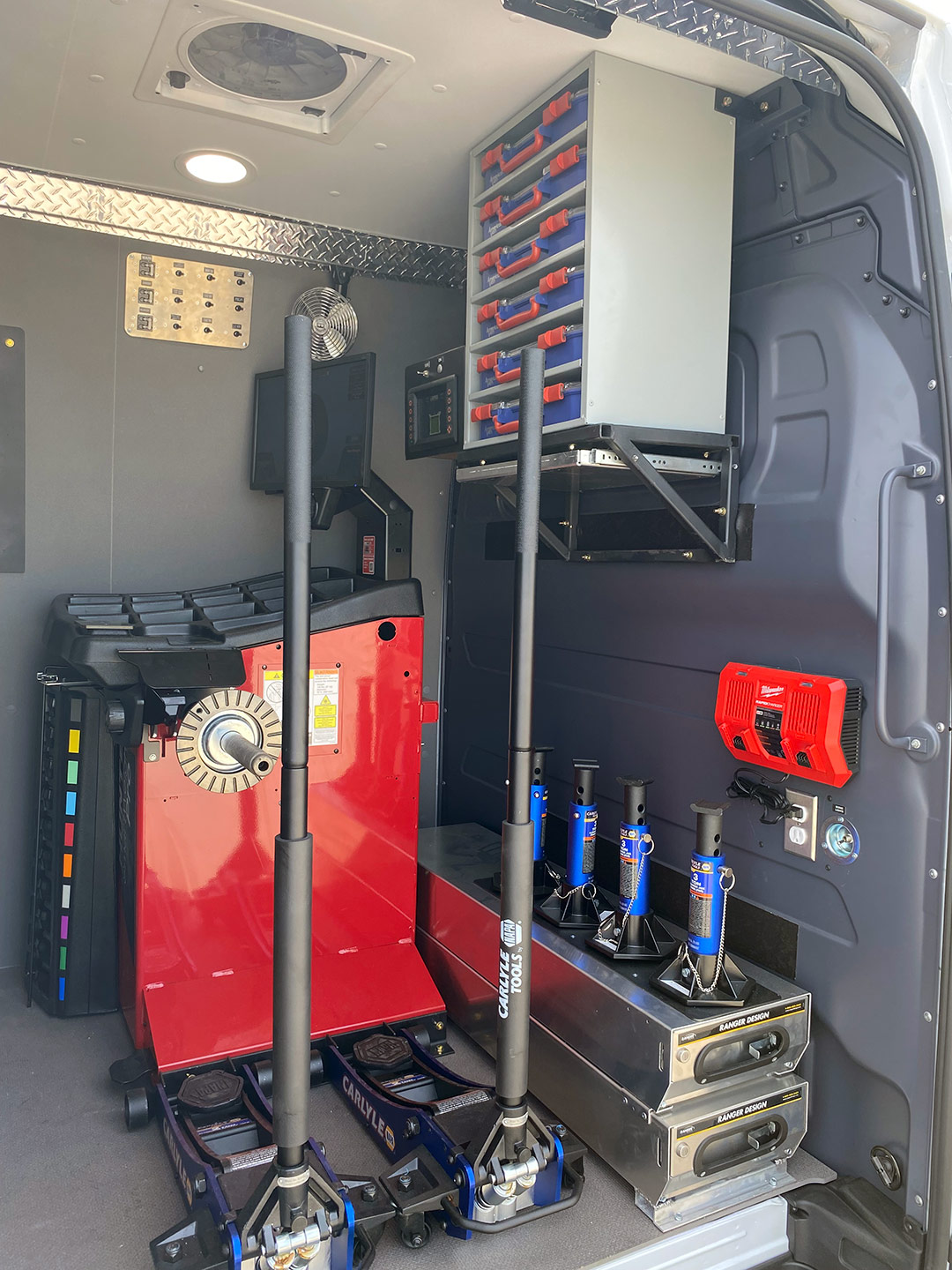Trusted Mobile Tire Service Las Vegas - On-Time Solutions
Trusted Mobile Tire Service Las Vegas - On-Time Solutions
Blog Article
Tire Service: Proven Techniques for Optimal Tire Maintenance and Treatment
Preserving ideal tire condition is paramount for both safety and security and efficiency of any type of vehicle. From ensuring correct tire pressure to regular turning and alignment, there are proven approaches that can significantly extend the life-span of your tires and improve total driving experience. As we explore the details of tire treatment and maintenance, we will discover essential standards that every vehicle proprietor should follow for the very best possible outcomes. Let's explore the globe of tire service and find the secrets to maintaining your tires in first-class form for the long run.
Significance of Tire Stress
Appropriate tire pressure promotes far better fuel effectiveness, as under-inflated tires can lead to increased rolling resistance, triggering the engine to function more challenging and eat more fuel. Proper tire pressure makes sure also tread wear, improving tire longevity and saving cash in the long run by postponing the demand for early replacements. Consistently changing and examining tire stress, especially previously lengthy trips, is a simple yet efficient way to improve automobile efficiency, extend tire lifespan, and prioritize security on the roadway.
Tire Turning Standards
When thinking about tire turning standards, it is necessary to understand the significance of this maintenance task in making the most of tire life expectancy and maintaining optimal car performance. Tire rotation includes altering the position of each tire on a car to guarantee even step wear. Front tires often tend to put on quicker than back tires as a result of guiding forces, making regular rotation vital for well balanced wear patterns. The suggested rotation pattern varies depending on whether a lorry is front-wheel, rear-wheel, all-wheel, or 4x4. Commonly, tires must be turned every 5,000 to 7,500 miles, or as advised in the automobile handbook. Overlooking tire rotation can bring about unequal wear, impacting handling, traction, and possibly compromising automobile security. By sticking to correct turning guidelines, chauffeurs can expand the life of their tires, boost fuel performance, and enhance total driving experience. Routine turning is a basic yet efficient upkeep method that contributes dramatically to tire longevity and lorry performance.

Advantages of Wheel Alignment
Ensuring correct wheel alignment after tire turning is essential for keeping well balanced wear patterns and maximizing automobile efficiency. Furthermore, proper wheel alignment assists to expand the lifespan of your tires. Misaligned wheels can trigger irregular tire wear, leading to premature tire substitute and increased maintenance expenses.

Tire Footstep Depth Examine
Executing a routine examination of tire walk deepness is necessary for preserving safe driving problems and prolonging the life-span of your tires. The tread on your tires plays a crucial function in providing traction, specifically in unsafe or wet problems. To inspect your tire step depth, you can utilize a step depth gauge or the dime test. The suggested step depth is at the very least 2/32 of an inch. It is time to change your tires to ensure ideal efficiency and safety and security on the road if the walk deepness is listed below this limit. Unequal walk wear can suggest concerns with tire alignment, pressure, or suspension, highlighting the value of normal step deepness checks. Neglecting to monitor and maintain appropriate walk depth can cause minimized grasp, longer stopping ranges, and an increased risk of hydroplaning. By incorporating tire tread depth look into your regular upkeep timetable, you can drive with self-confidence recognizing that your tires are in top condition.
Seasonal Tire Inspection
A thorough evaluation of tire condition customized to particular weather problems is vital for preserving optimum efficiency and safety throughout the year. Seasonal tire examination is a fundamental facet of tire maintenance that makes certain tires prepare to encounter the difficulties posed by different weather. In prep work for wintertime, it is important to inspect the tire stress routinely as cool temperatures can trigger tire stress to drop. Examining tire hop over to here tread deepness is also important to guarantee appropriate grip on snow and ice-covered roadways. Furthermore, inspecting for signs of wear and tear, such as bulges or cracks, can assist protect against potential tire failures. As the periods adjustment, it is essential to analyze tire condition and make any needed changes to assure navigate to this website safe driving. By conducting routine seasonal tire assessments, vehicle drivers can prolong tire lifespan, enhance gas efficiency, and most importantly, make sure a safe and secure driving experience in differing weather problems - Mobile Tire Change Las Vegas.
Verdict
To conclude, preserving proper tire stress, rotating tires on a regular basis, straightening wheels appropriately, monitoring walk depth, and conducting seasonal assessments are vital practices for optimum tire care. By following these proven approaches, chauffeurs can guarantee their tires last longer, execute better, and add to overall automobile safety. It is very important to prioritize tire upkeep to stop crashes, enhance gas efficiency, and extend the life-span of tires.
Sufficient tire stress advertises better gas performance, as under-inflated tires can lead look at here now to increased rolling resistance, causing the engine to work harder and eat even more gas.When thinking about tire turning guidelines, it is essential to comprehend the significance of this upkeep job in taking full advantage of tire life-span and maintaining optimal car efficiency. Seasonal tire assessment is a basic aspect of tire maintenance that ensures tires are prepared to face the difficulties presented by various climate problems. By performing regular seasonal tire examinations, vehicle drivers can lengthen tire life-span, boost gas performance, and most importantly, guarantee a protected driving experience in varying weather conditions.
In verdict, keeping correct tire stress, turning tires on a regular basis, straightening wheels properly, keeping an eye on walk depth, and conducting seasonal inspections are essential techniques for optimum tire care.
Report this page